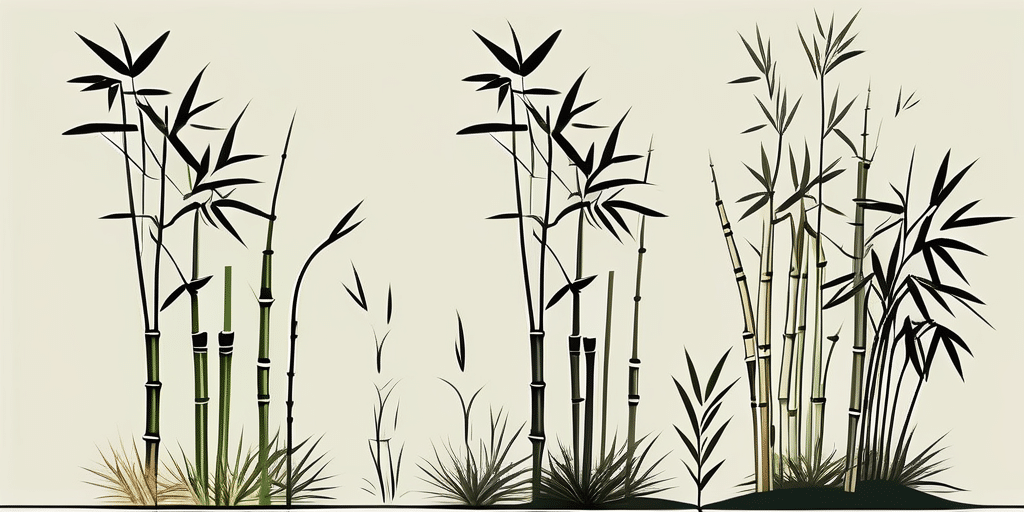Are you interested in adding a beautiful and beneficial plant to your garden? Look no further than clover! In this ultimate guide, we’ll walk you through everything you need to know about planting clover and reaping its many rewards. From understanding the different types of clover to caring for your plants after planting, we’ve got you covered. Let’s dig in!
Understanding Clover: An Introduction
Before we dive into the nitty-gritty of planting clover, let’s get acquainted with this incredible plant. Clover is a member of the legume family, which means it has the unique ability to fix nitrogen from the air and convert it into a form that plants can use. This makes clover an excellent natural fertilizer for your garden, boosting soil health and promoting the growth of other plants.
But did you know that clover has a rich history intertwined with folklore and cultural significance? In ancient times, clover was believed to bring good luck and protection from evil spirits. It was even considered a sacred plant by the ancient Celts, who believed that finding a four-leaf clover could grant you extraordinary luck and fortune.
Types of Clover for Your Garden
When it comes to choosing the right type of clover for your garden, you’ll find a few popular options:
- White Clover (Trifolium repens): A versatile and hardy clover variety that thrives in a wide range of soil conditions. It is known for its small white flowers and ability to attract beneficial insects like ladybugs.
- Red Clover (Trifolium pratense): Known for its vibrant pink flowers and ability to attract pollinators. Red clover is often used in herbal medicine due to its potential health benefits, including relieving menopausal symptoms and supporting cardiovascular health.
- Crimson Clover (Trifolium incarnatum): A cool-season clover with bright red flowers, ideal for overseeding in the fall. It not only adds a pop of color to your garden but also improves soil fertility by fixing nitrogen.
The Benefits of Planting Clover
Planting clover in your garden offers a multitude of benefits:
- Natural nitrogen fixation: As mentioned earlier, clover has the amazing ability to take nitrogen from the air and convert it into a usable form for plants. This reduces the need for synthetic fertilizers, saving you money and helping the environment.
- Weed suppression: Clover is an excellent ground cover, outcompeting and suppressing the growth of weeds. Its dense growth and ability to shade the soil prevent weed seeds from germinating and taking over your garden.
- Erosion control: Its dense root system helps prevent soil erosion, making it a fantastic choice for slopes and areas prone to runoff. By stabilizing the soil, clover protects against the loss of valuable topsoil and the degradation of your garden’s landscape.
- Pollinator support: Clover’s bountiful nectar attracts bees and other beneficial pollinators, supporting a healthy ecosystem in your garden. By providing a food source for these important creatures, you are not only helping your own garden flourish but also contributing to the overall well-being of the environment.
So, whether you’re looking to improve your soil fertility, enhance the beauty of your garden, or create a haven for pollinators, planting clover is a wise choice. With its remarkable abilities and numerous benefits, this humble plant has earned its place as a valuable addition to any garden.
Preparing Your Soil for Clover Planting
Now that you’re eager to plant clover, it’s important to prepare your soil to provide the best growing conditions for these lovely plants.
Clover is a versatile and beneficial plant that not only adds beauty to your garden but also helps improve soil health. By following some simple steps, you can ensure that your clover thrives and contributes to a flourishing ecosystem in your yard.
Testing Soil pH Levels
Before you begin any soil preparation, it’s crucial to determine the pH level of your soil. Clover has a preference for slightly acidic to neutral soil (pH 6.0-7.0). You can easily test your soil using a soil testing kit or by sending a sample to a local cooperative extension for analysis. Adjusting the pH level, if necessary, will ensure optimal clover growth.
Understanding your soil’s pH is essential as it directly affects the availability of nutrients to plants. A pH level that is too high or too low can result in nutrient deficiencies, impacting the overall health and growth of your clover plants.
Necessary Soil Amendments for Clover
To create a thriving environment for clover, consider incorporating the following soil amendments:
- Organic matter: Adding compost or well-rotted manure improves soil structure and fertility.
- Phosphorus and potassium: Using organic fertilizers or amendments rich in these nutrients helps provide a balanced soil composition.
Remember to follow the recommendations provided by your soil test results for precise amounts of amendments to use.
Additionally, it’s important to ensure that your soil has good drainage to prevent waterlogging, which can be detrimental to clover growth. Incorporating organic matter not only enriches the soil but also aids in maintaining proper moisture levels, creating an ideal environment for clover to thrive.
The Clover Planting Process
Now that your soil is prepped and ready, it’s time to plant your clover seeds. Here’s how:
When to Plant Clover
The optimal time to plant clover depends on your gardening zone and the specific variety you’ve chosen. In general, cool-season clover should be sown in early spring or fall, while warm-season clover thrives when planted in late spring or early summer. Consult local agricultural extension offices or reputable gardening resources for specific planting dates in your area.
Before planting, it’s essential to consider the weather conditions in your region. Clover seeds require consistent moisture and moderate temperatures to germinate successfully. Avoid planting during periods of extreme heat or drought, as this can hinder seed germination and establishment.
How to Sow Clover Seeds
- Prepare the seedbed: Rake the soil surface to create a smooth and crumbly bed for sowing.
- Spread the seeds: Scatter the clover seeds evenly over the prepared area. Consider using a handheld spreader for even distribution.
- Cover the seeds: Gently rake or roll over the seeded area to cover the seeds with a thin layer of soil. Be careful not to bury them too deep, as clover seeds require sunlight to germinate.
- Water the area: Give the newly sown seeds a good soaking to ensure adequate moisture for germination.
- Maintain moisture: Keep the soil evenly moist during the germination period, typically around two weeks.
After the initial germination phase, monitor the growth of your clover plants closely. Once the seedlings have established a strong root system and developed several sets of leaves, you can gradually reduce the frequency of watering. Established clover plants are known for their resilience and ability to withstand dry spells, making them a low-maintenance addition to your garden or landscape.
Caring for Your Clover After Planting
Congratulations on successfully planting your clover seeds! Now let’s explore how to care for your clover plants as they grow. Clover is a versatile and beneficial plant that not only adds beauty to your garden but also enriches the soil with nitrogen, benefiting surrounding plants.
As your clover begins to flourish, it’s essential to provide it with the right amount of water and nutrients to support healthy growth. In addition to watering, you can consider mulching around the clover plants to help retain moisture in the soil and suppress weed growth. Organic mulches like straw or shredded leaves can also break down over time, adding valuable organic matter to the soil.
Watering and Feeding Your Clover
Clover generally requires about 1-2 inches of water per week, either from rainfall or supplemental watering. However, be careful not to overwater, as clover is drought-tolerant once established. When it comes to feeding your clover, minimal fertilization is typically needed, thanks to its nitrogen-fixing properties. Avoid applying nitrogen-rich fertilizers, which can interfere with clover’s natural process.
Furthermore, clover attracts pollinators like bees with its nectar-rich flowers, contributing to a thriving ecosystem in your garden. Observing these pollinators buzzing around your clover can be a delightful sight and a sign of a healthy garden environment.
Dealing with Common Clover Pests
While clover is generally pest-resistant, a few common pests may occasionally cause trouble. Here are some natural ways to address them:
- Aphids: Blast them off with a strong spray of water or introduce beneficial insects like ladybugs to control their population.
- Clover Mites: These tiny red pests can be deterred by creating a barrier with diatomaceous earth or a mixture of garlic and water.
- Snails and Slugs: Set up beer traps or use copper barriers to keep these slimy critters away from your clover.
Remember, integrated pest management practices, such as maintaining a healthy garden ecosystem, can prevent pest issues in the first place.
The Role of Clover in Sustainable Gardening
Clover’s impact on sustainable gardening goes beyond its numerous benefits. Let’s explore some ways in which clover contributes to a more sustainable gardening practice.
Clover as a Natural Fertilizer
By fixing nitrogen from the air and enriching the soil with this vital nutrient, clover reduces the need for synthetic fertilizers. This, in turn, helps prevent nutrient runoff and its detrimental effects on water bodies, promoting a healthier and more sustainable environment for all.
Clover for Erosion Control
Thanks to its robust root system, clover helps control erosion by stabilizing the soil and preventing it from washing away during heavy rains. This is especially beneficial for sloped areas or gardens prone to runoff. Consider planting clover in combination with other erosion-control methods for optimal results.
Now that you have the ultimate guide to planting clover, it’s time to get your hands dirty and enjoy all the wonders this remarkable plant has to offer. Happy clover planting!
Join Our Green-Thumbed Community!
Ready to transform your garden into a lush, clover-filled paradise? Subscribe for free to How to Grow Everything and learn how to build the garden of your dreams! Receive personalized gardening advice tailored to your location, grow zone, and experience level. Enjoy the best gardening tips, special offers, and deals delivered straight to your inbox—100% free, from our family to yours. Don’t miss out on our treasure trove of free growing and gardening articles. Let’s grow together!



